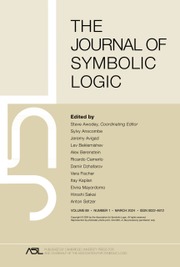Crossref Citations
This article has been cited by the following publications. This list is generated based on data provided by Crossref.
Sato, Yuta
2025.
Uniform Lyndon interpolation for the pure logic of necessitation with a modal reduction principle.
Journal of Logic and Computation,
Vol. 35,
Issue. 7,





